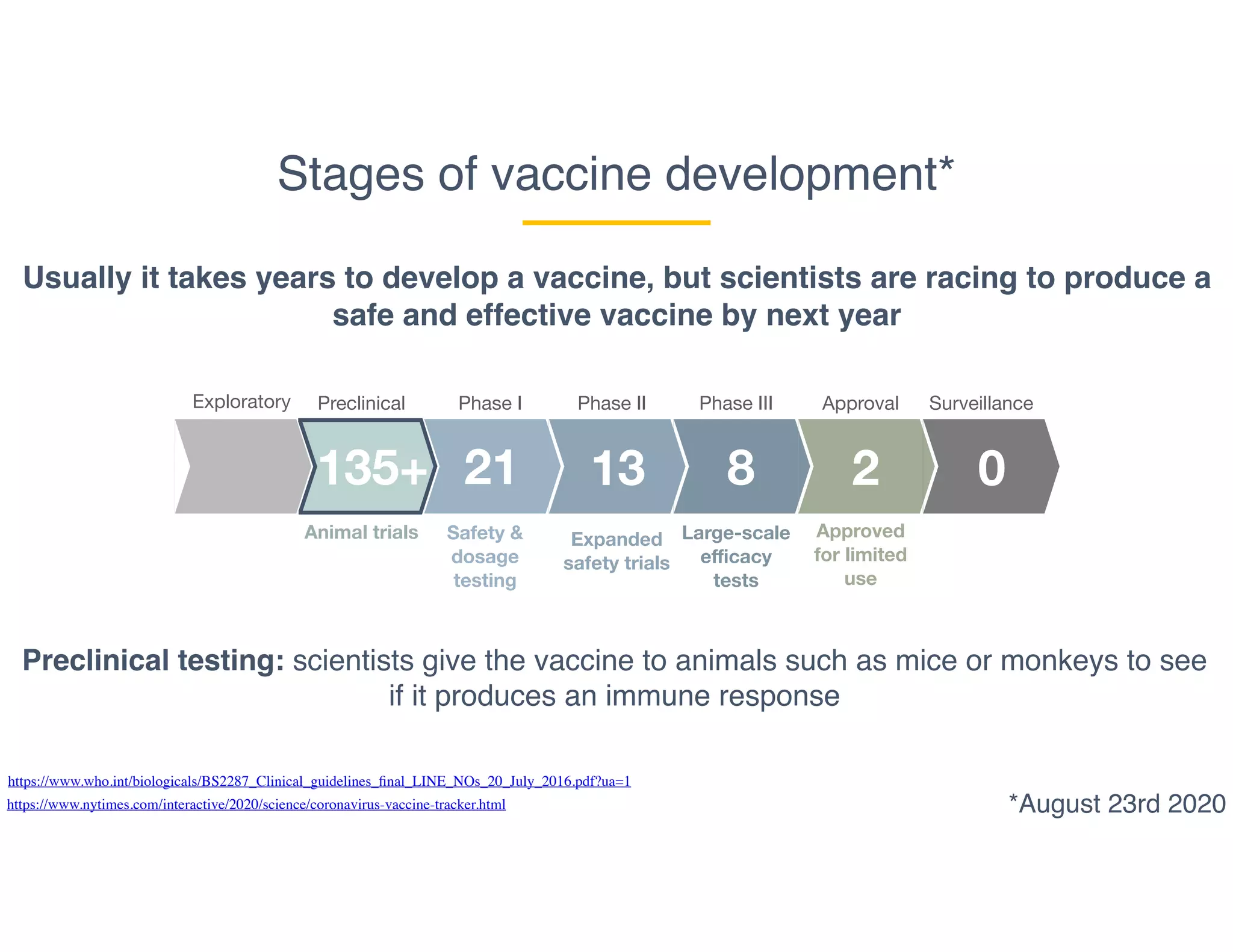The document discusses the process of vaccine development, emphasizing how immunity is built in response to viral infections and detailing the types of vaccines, including whole virus, protein-based, DNA, RNA, and viral vector vaccines. It outlines the steps involved in vaccine development, from exploratory phases to preclinical testing and large-scale trials, while noting the accelerated timeline in response to the COVID-19 pandemic. The document further explains how vaccines work to stimulate the immune system and includes references to various vaccine types and their mechanisms.



















































